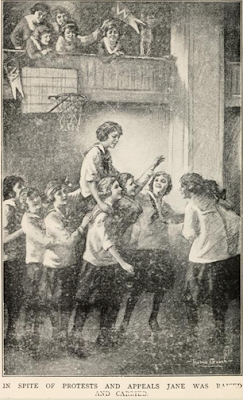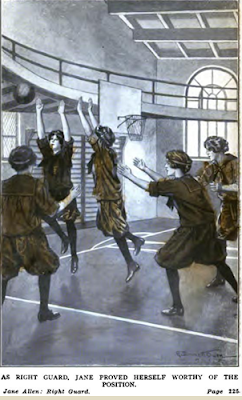Okay, the Christopher Cool, TEEN Agent series is my all time favorite boys series. I cannot tell you how much kitsch-tastic amazingness is contained in each volume. The series was published in 1967-69 by Grosset and Dunlap and written by Jim Lawrence (who wrote the newspaper strip version of James Bond, appropriately enough) under the pen name Jack Lancer. Chris is the son of Dr. Jonathan Cool, "America's foremost brain in high energy physics," who mysteriously disappeared a couple of years ago. Chris goes to the CIA at 17, hoping to get hired and go after his dad. Instead, he gets funneled into the TEEN (Top-secret Educational Espionage Network). Yes, I'm serious. Yes, it's fabulous.
Anyway, two years later, Chris is at Kingston (an Ivy League type college), rooming with his TEEN partner, Geronimo Johnson. Gerry is Apache, which is one of the fifty million languages that Chris speaks fluently. I won't deny that a lot of the Native American humor in this series is kind of cringe-worthy, but most of it's tongue-in-cheek and mocks the other characters, rather than Gerry. Q is their main contact from Control, dresses in a navy blazer and a yachting hat, smokes an unlit pipe, and takes constant swigs from a bottle of milk. Could I make any of this UP? I LOVE IT. The heroine (supporting character) is Spice Carter, a fiery redhead who can hold her own in intelligence and a fight. The villains alternate between the Reds (obvious Cold War influence in the series) and TOAD, which is a network of supervillains aimed on global domination. SQUEE!
In this first title, Chris and Gerry are off to France, in search of a secret weapon Ciel Assassin/Skykill. It's been developed by an evil genius, Le Glacier/the Chiller. Of course. They meet up with Spice Carter for the first time outside of Paris, and both boys are impressed with her, not just her looks, but mostly her skillz. To give you an example of a typical Chris Cool adventure, there's a fight scene on top of the Eiffel Tower, and Chris gets thrown over, goes into a skydiving roll, turns on the jet packs built into his shoes, then Gerry zips him a rescue line. Also typical: underground labs abound, with venomous attack bats. These books are PERFECTION.
 |
| This refuses to rotate. |
- The story begins with a hot flash from Control via their wristwatches. I tried to keep track of the gadgets for this entry, but it was getting ridiculous. Rough list: chewing gum explosives, UV light rings, jet pack shoes, rescue lines, ties that adapt to gas masks.
- "The 4.2 liter engine purred like a well-fed pussycat, then broke into a full-throated jungle roar as the black Jag shot down the driveway into Madison Circle." The Jag is their main car.
- Q calls the CIA "Cloak and Dagger," which I found entertaining.
- TOAD sends toads to intended victims, and stamps the foreheads of victims with a bladed, venom-injecting stamp.
- Sixties fashions abound, including a, "Gaunt horse-faced woman with dangling earrings and a brassy yellow fright wig."
- When they talk about girls, they pretty flatly say whether or not they're hot. To me, this reads a lot more true to a typical 19 year old guy than most of these books.
- Chris himself is of course hot, with blond hair, blue eyes, and a tight frame. Gerry is constantly described as having coppery skin and longish black hair. The book mocks those around them who give Gerry the side eye.
- I apologize for how much squeeing fangirlness is in this post, but I seriously can't recommend these books highly enough. Guaranteed entertainment.

























